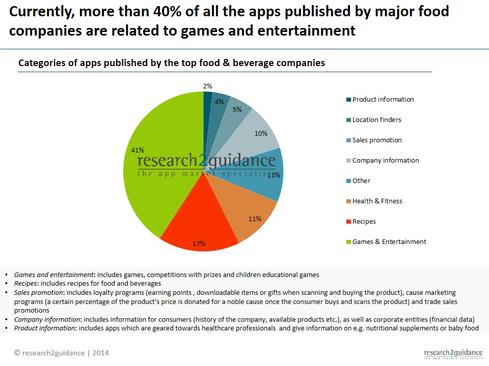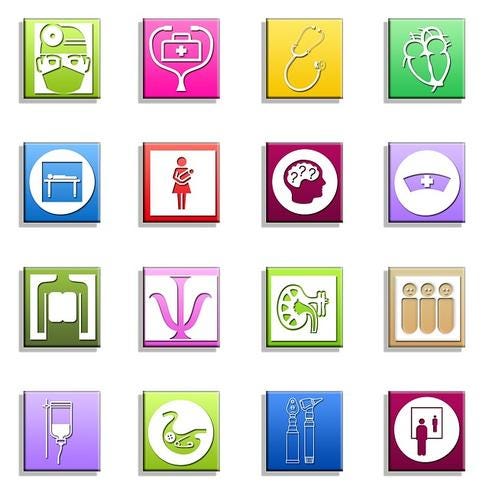Mobile health apps play a key role in educating consumers and could lead to a healthier, more responsible food industry.


15 Apps For Healthy Living
15 Apps For Healthy Living (Click image for larger view and slideshow.)
More consumers are using smartphones to monitor their personal health and gain more control over their own medical records and treatment, and they want food producers and providers to deliver that same transparency.
The obvious way to do this is via smartphones and tablets. But the largest players in the world's food-producing community have yet to heed the call. Today, 41% of their apps are related to games and entertainment, according to the mNutrition App Strategy Paper by German firm Research2Guidance. The report found that only 11% pertain to health and fitness, while 17% focus on recipes. Meanwhile, small developers and food companies offer "real nutrition apps which are better at helping consumers personalize their consumption behavior."
Food businesses, including supermarkets and restaurants, must leverage mobile apps to educate consumers about the ingredients, provenance, and chemicals used in the production of food, said Elke Kux, analyst at Research2Guidance, in an interview.
[For more ideas to foster patients' involvement in their own healthcare, read Engage Patients: 16 Creative Healthcare Strategies.]
"The whole market is consumer-driven. [Food producers] are reluctantly taking it up," she said. "I don't think it's in everybody's best interest to be transparent."
Some are experimenting, however. For six months last year, McDonalds Australia allowed consumers to trace the origins of their fries, burgers, nuggets, or fish via apps and QR codes. The Track My Macca (slang for McDonalds) campaign, which included vignettes from fishermen, farmers, and bakers, was part of the company's transparency campaign designed to counter negative publicity spurred by the 2004 documentary film Super Size Me and complaints by vegetarians, according to Britain's Telegraph.
Public scrutiny has also forced food companies to alter their ingredients. Blogger FoodBabe instigated a successful campaign to stop Subway from using a chemical found in yoga mats and shoe rubber in its bread. In May 2014, organizers hope to attract more than 2 million participants worldwide to march in protest of Monsanto and genetically modified plants.
Nutrition apps give consumers more insight into what they're eating, Kux said, and as a result, they put more pressure on the food industry to reduce chemical usage, improve quality, and enhance health benefits.
Consumers will drive this change, but it won't happen quickly, according to Greg Eoyang, CEO of healthcare app developer daVinci (a subsidiary of integrator Intelligent Decisions). "I definitely think it's going to happen. I don't think it's going to be a straight path. There'll be a lot of landmines to look out for," he said in an interview.
Health-aware consumers can use mobile nutrition apps to determine where food was grown or raised and to better understand chemical usage as well as fat, calories, salt, and other stats. They can learn how farmers grow crops and get information about fertilizers and chemicals used in cultivation and other processes. As a result, Kux said, food businesses can expect more pressure to sell high-quality foods with fewer chemicals.
That's one reason players in smaller markets -- such as gluten-free, vegan, and other specialty foods -- dominate the mobile apps today, according to Kux. "Consumers' values are changing toward local foods and niche foods," she said. Prompted by the growth in followers of gluten-free diets, demand for "natural" or local foods, and more sophisticated palates, small growers and sellers are more likely to engage with consumers via apps.
"Smaller farms can easily be integrated as long as they're updated with IT, which they're not always now," she said. "You can have cocoa beans from niche markets." For example, consumers choose cocoa beans from small farms in Ecuador, which they buy from SMB e-tailers that detail the beans' and farmers' stories.
In restaurants, consumers will create personalized meals, combining items using each ingredient's nutrition, calorie, and price information. The completely automated system will reduce waste but require more flexibility in the kitchen.
Even fertilizer companies will become more consumer-focused. "Today small farmers are relying on wholesalers for information, and they're often putting the wrong fertilizer on their crops at the wrong time," said Kux. "Apps will make them more efficient, growing better crops."
Some healthcare apps, such as MyFitnessPal and RestaurantNutrition, provide this information, but it's challenging to get insight directly from food providers and restaurants. Healthcare companies may also advocate for inclusion of this data, Kux said, as they integrate personal fitness devices into patients' health programs. "I would expect more alliances and partnerships," she added.
Download Healthcare IT In The Obamacare Era, the InformationWeek Healthcare digital issue on changes driven by regulation. Modern technology created the opportunity to restructure the healthcare industry around accountable care organizations, but ACOs also put new demands on IT.
About the Author(s)
You May Also Like







